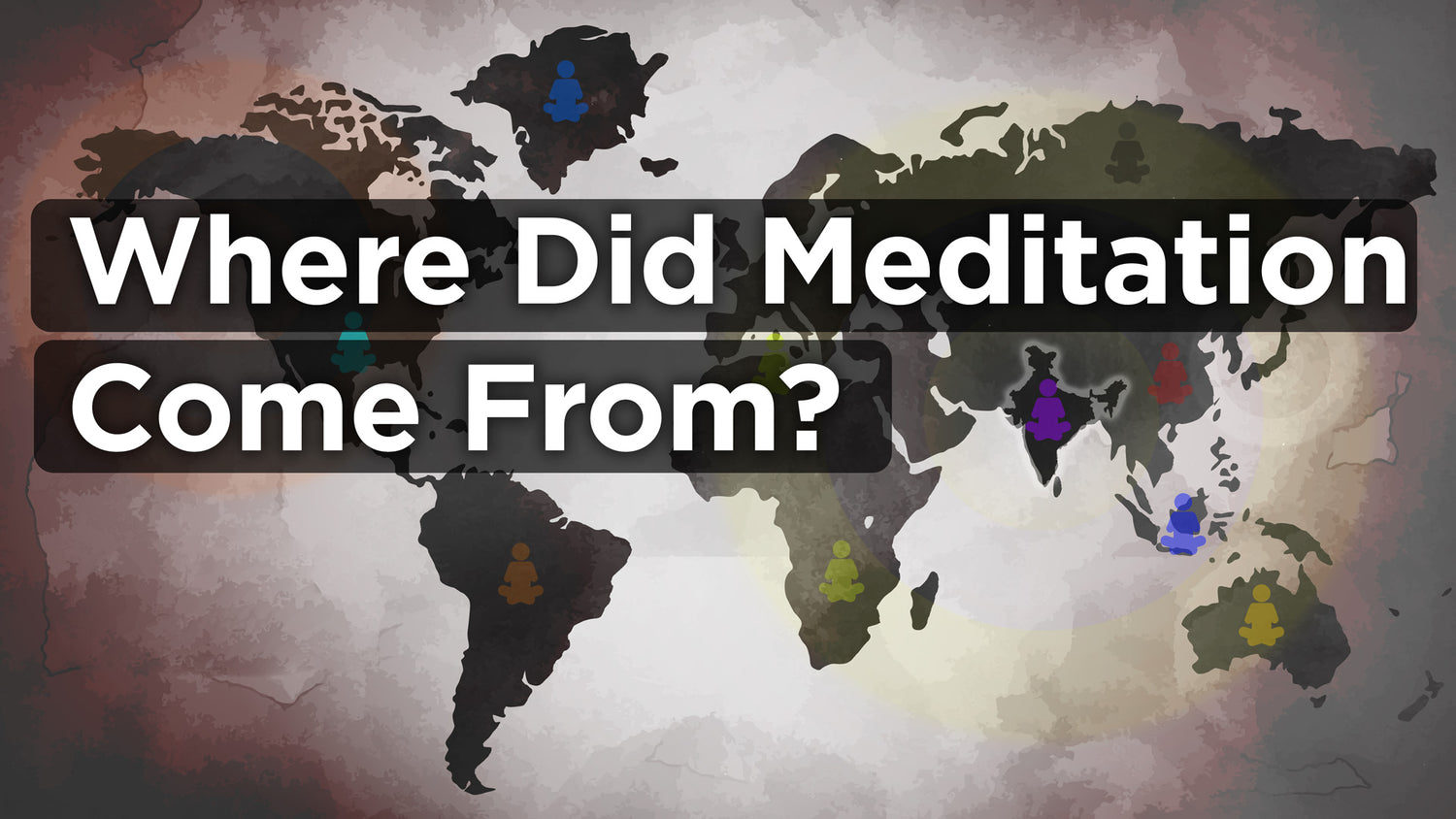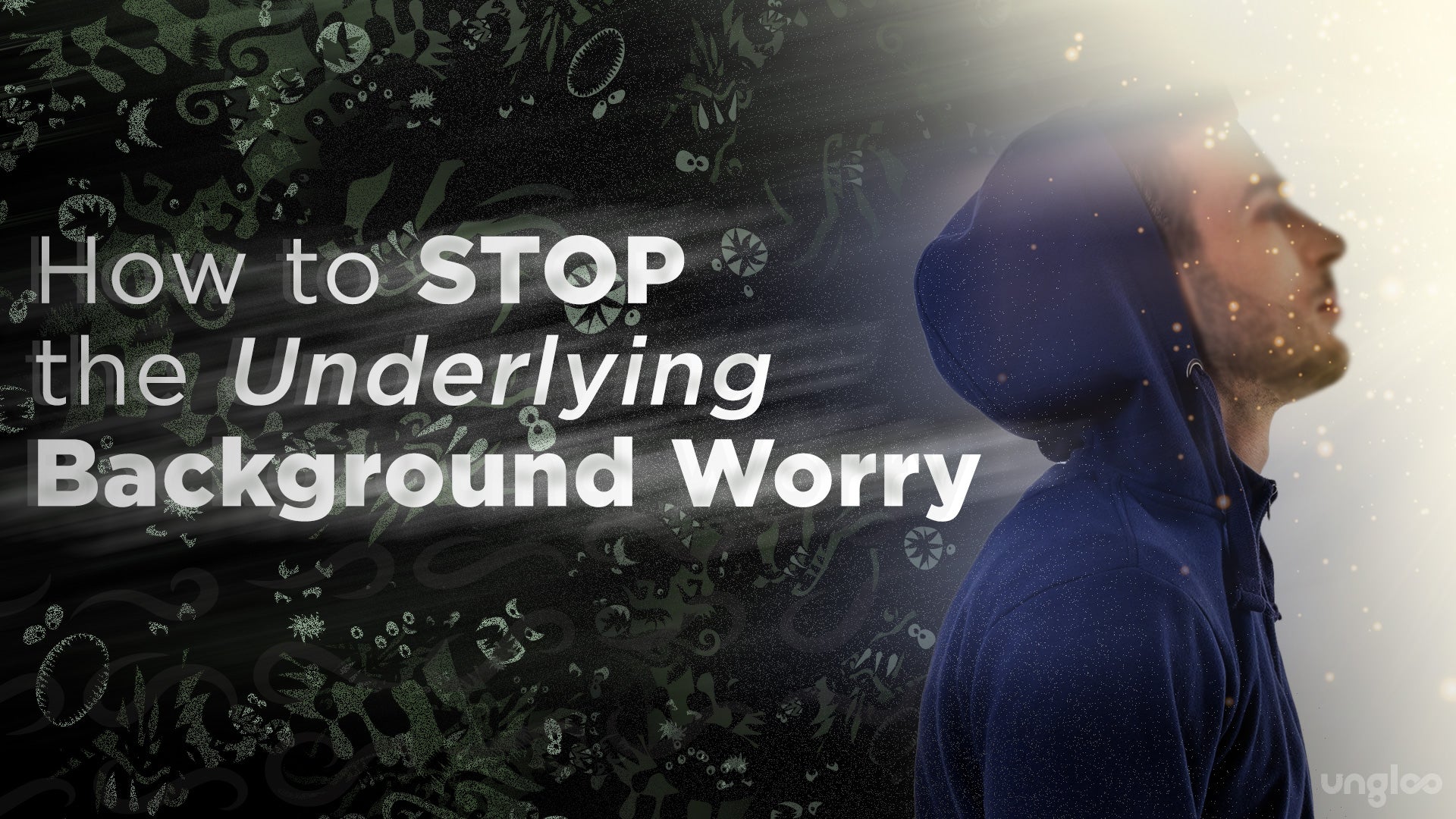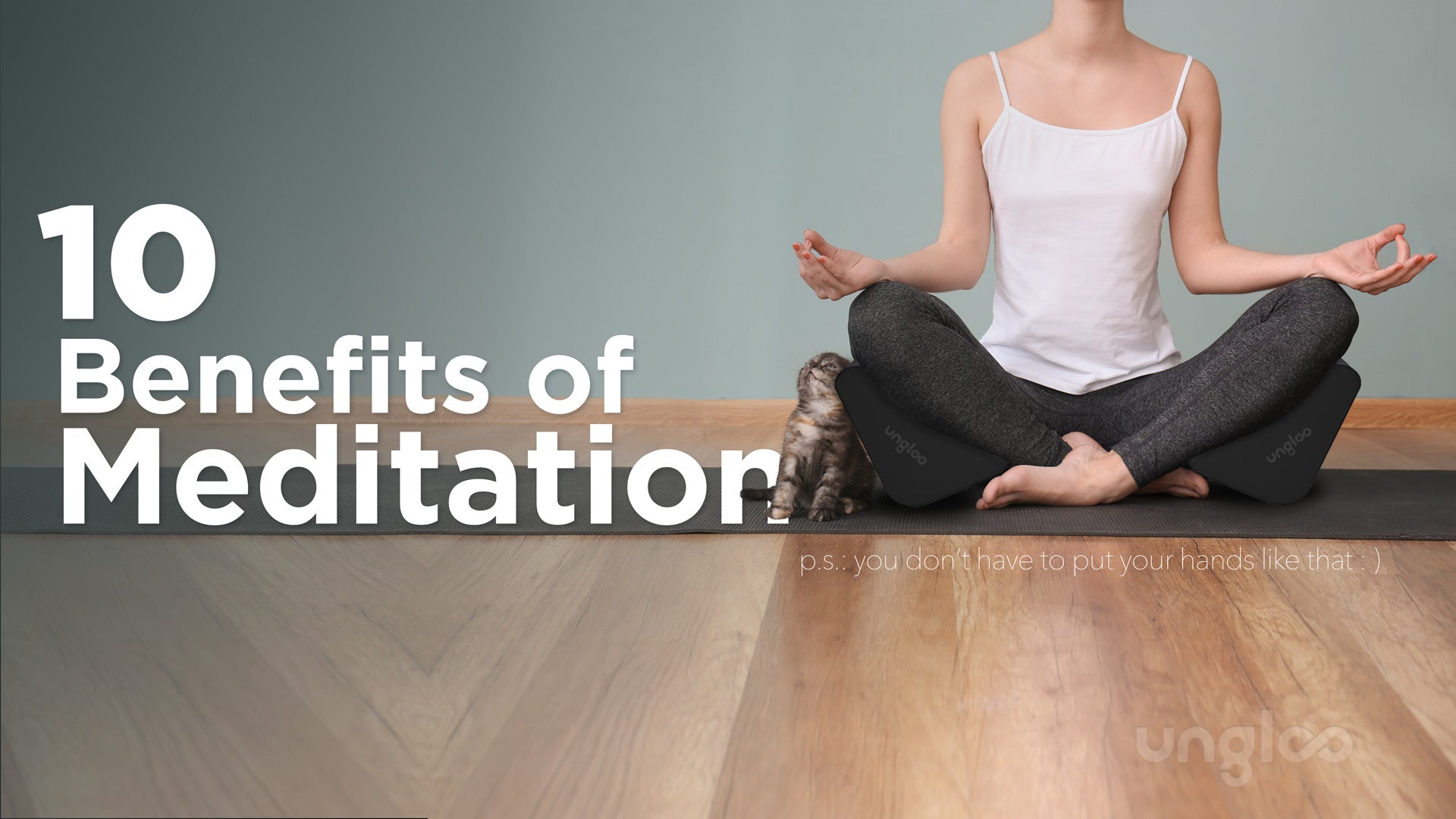Where did meditation come from? The answer may surprise you.
Meditation is an ancient practice that's been around for countless millenniums. Some scholars even believe it's as old as humanity itself.
Our guide will teach everything you need to know about the origins of meditation, from its history to the pioneers that spread these teachings.
Once you finish reading, you’ll be able to meditate with ease and enjoy all of the fresh knowledge you've learned about your favorite practice.
If you're interested in learning more, or if you're struggling with anxiety or other health issues, keep reading. This is the blog post for you!
What Is Meditation?
Meditation is an ancient, well-respected practice used for centuries to help us relax, focus, and connect with our inner thoughts and feelings. The practice of meditation and health work synonymously in mind, body, and spirit.
The benefits of meditation include:
- Inner peace
- Improved self-awareness
- Increased spirituality
- Better physical health
- Enhanced mental health
There are many different types of meditation. Some practices quiet the mind, some help us focus on the present moment, and some even help us undergo powerful spiritual awakenings. Regardless of which type of meditation you choose, you're bound to experience incredible results.
Where Did Meditation Come From?
The truth is, no one knows for sure when and where meditation began. But we have evidence-backed ideas.
Multiple cultures and religions reference this ancient ritual, including:
- Hinduism
- Buddhism
- Judaism
- Islam
- Christianity
These religions all contribute to our modern understanding of the meditative practices we know today. The origins of meditation are often debated, but many believe the practice started in India over 5000 years ago.
Meditation Origins: India
The earliest written record of meditation is believed to be from the Vedas, a collection of Hindu scriptures. The Vedas texts date back to 1500 BCE.
In the Vedas, there are references to a practice called “Dhyana,” which is thought to be our earliest known knowledge of meditative practices.
Dhyana is a Sanskrit word that means “contemplation” or “meditation.” The goal is to still the mind and achieve a state of “thoughtless awareness. Yet, Buddhist beliefs often reject Vedantism in favor of the teachings of Buddha.
The different states of meditation in Buddhism are also found in other ancient Indian texts dating back to the first century BCE. These texts are called the Sutras of the Pāli Canon. The Pāli Canon is a collection of Theravada Buddhist literature.
Then there is Buddha. Buddha was an Indian prince named Siddhartha Gautama. He was on a quest to find a way to end human suffering.
Gautama tried many different methods, but nothing seemed to work. One day, he sat down under a tree and vowed not to move until he found the answer he was looking for.
After 49 days of sitting, he achieved enlightenment and founded the Buddhist religion. From there, the practice of meditation is said to have spread throughout India.

Buddhist monks embraced meditation as a way to achieve inner peace---they often sit for hours in silence, meditating on the teachings of their master.
Meditation Origins: Asia
The practice of meditation then spread to China, where it was influenced by Taoism and Buddhism around the 6th century BCE. Buddhist monks from India brought meditation to China at the end of the Han dynasty. Over the next century, the practice started to assimilate into the Chinese culture.
The Taoists also believed in the power of meditation and developed their own methods for stilling the mind. One popular Taoist meditation technique is called “Qigong.” Qigong is a form of moving meditation that involves slow, gentle movements and deep breathing.
From China, meditation spread to Japan, Korea, and other parts of Asia. Japan is home to a form of meditation called “Zazen,” practiced by Zen Buddhists.
The practice came to Japan through the Japanese monk Dosho, who traveled to China and studied Buddhism under the great master Hsuan Tsang. Zazen means “seated meditation” and involves sitting in silence with eyes closed.
Korea has its own form of meditation called “Won,” based on Buddhist and Taoist principles. It's a type of moving meditation that uses gentle, rhythmic movements to relax the body and mind.
Meditation Origins: The West
The practice of meditation made its way to the West in the 20th century. One of the first Westerners to popularize meditation was Maharishi Mahesh Yogi. Maharishi is best known for introducing the practice of “transcendental meditation” in the 1960s.
The Yogis are a Hindu sect that believes in the power of meditation to help achieve enlightenment. The word “yoga” actually means “union” or “connection.” So, yoga aims to achieve a union of the mind, body, and spirit.
Other Yogis, like Paramahansa Yogananda, who wrote the popular book “Autobiography of a Yogi," also played a role in introducing meditation to the West.
Maharishi's form of meditation involves sitting with our eyes closed and repeating a mantra. A mantra is a word or phrase that's repeated over and over again. The goal is to focus on the mantra and clear our minds.
Modern Meditation
Today, meditation is practiced by people all over the world. We can thank the early pioneers of meditation for introducing this life-changing practice to our world.
In recent years, there's been a resurgence of interest in meditation. This is likely due to the revival of new age and spiritual practices. A likely reason for this revival is because we are entering into a new age according to various ancient beliefs---a time of change and spiritual revolution.
The Future of Meditation
In the cosmology of Hinduism, Yugas are periods of time that last for thousands of years. Currently, we are in the Kali Yuga, which is said to be the age of darkness. The next Yuga is the Satya Yuga, the age of truth.
Astrological concepts describe this new coming age as the Age of Aquarius, a time of spiritual awakening and higher consciousness.
Some believe we are transitioning from the Kali Yuga to the Satya Yuga. This is a time of great change and transformation, an exciting time to be alive! And meditation will play a key role in helping us to navigate these changes.

As more and more people seek ways to reduce stress and find inner peace in this dying era of Kali Yuga, meditation will continue to grow in popularity.
Origins: Types of Meditation
There are many different styles of meditation. They all have similar goals and origins, but they all produce similar results.
Mindfulness Meditation
Mindfulness meditation is a type of Buddhist meditation that was popularized in the West by Jon Kabat-Zinn.
The goal of mindfulness meditation is to focus on the present moment and be aware of our thoughts, emotions, and sensations without judgment.
Transcendental Meditation
Transcendental meditation is a type of mantra-based meditation that Maharishi Mahesh Yogi popularized in the 1950s.
The goal of transcendental meditation is to achieve a state of inner peace and calm by repeating a mantra. The mantra is a word or phrase that repeats over and over again until we reach "transcendental consciousness."
Guided Meditation
Guided meditation is a type of meditation where the practitioner is guided through the method by a teacher, therapist, or recorded voice. Its earliest origins are in Eastern practices like yoga and Buddhism, now adapted for use in the West.
The goal of guided meditation is to reach a state of relaxation and calm. We can perform guided meditations on our own, with meditation apps, or in a group setting with a teacher.
Movement-Based Meditation
Movement-based meditation is a type of meditation that incorporates movement into the practice. The most popular form of movement-based meditation is yoga. Other art forms include Chinese Tai Chi and Qigong.
The goal of movement-based meditation is to focus on the body and the breath while also incorporating physical movement.
Mantra Meditation
Mantra meditation involves the repetition of a mantra. The mantra can be anything from a word or phrase to a sound or chant. The practice originated in ancient India and it's still widely practiced today.
The goal of mantra meditation is to focus the mind on the mantra and achieve a state of deep relaxation.
Visualization Meditation
Visualization meditation is a type of meditation that involves picturing a scene or image in our mind. The Visualization Sutras are a set of ancient Indian texts that outline the practice of visualization meditation, dating back to the 6th century CE.
The Russians also made visualization techniques popular during the 1980s for use in winning Olympic competitions.
The goal of visualization meditation is to focus the mind on a positive image or scene and achieve a state of relaxation.
Quantum Leap Meditation
Quantum leaping is a type of meditation developed by Dr. Joe Dispenza. Dispenza is a chiropractor, meditation teacher, and author. He's a cutting-edge thinker who's spent years studying the power of meditation and mindfulness.
Quantum Leap Meditation aims to use the power of visualization and intention to create positive change in our lives. It focuses on the present moment and the power of now, and it's based on the idea that we are all connected to the quantum field---that we can meditate to change our reality.

Quantum Leap Meditation aims to focus on positive affirmations and achieve personal transformation that aligns with our highest timeline.
Meditate in Peace With the Ungloo Box
So, where did meditation come from? The practice has a long and assorted history, with roots all over the world---and it's still evolving today.
If you're interested in trying meditation, we invite you to check out the Ungloo Box. The Ungloo Box provides a comfortable and peaceful way to get the most out of your daily meditation practices.
Our meditation chairs work with all types of seated meditation, from mindfulness and breathing to mantra and visualization.
Shop for the Ungloo Box today!




1 comment
Antique Buddhas
Thank you for such a comprehensive and insightful guide to the origins of meditation! I really appreciated the historical context you provided, which helps deepen my understanding and connection to this practice. Your clear and beginner-friendly explanation makes the journey into meditation feel approachable and meaningful. This was truly a wonderful read, and I’m grateful for the knowledge you’ve shared. Keep up the amazing work!
Regards,
Antique Buddhas
https://www.antique-buddhas.com
Thank you for such a comprehensive and insightful guide to the origins of meditation! I really appreciated the historical context you provided, which helps deepen my understanding and connection to this practice. Your clear and beginner-friendly explanation makes the journey into meditation feel approachable and meaningful. This was truly a wonderful read, and I’m grateful for the knowledge you’ve shared. Keep up the amazing work!
Regards,
Antique Buddhas
https://www.antique-buddhas.com